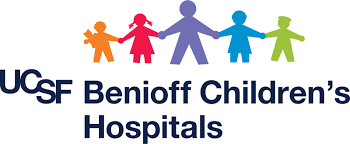We Belong: Increasing Diversity in the Nursing Work Force
Background
We know intuitively, that patients receive better quality of care when health professionals, including nurses, reflect their racial, ethnic and linguistic backgrounds. In order to achieve these improved outcomes, increasing the diversity of our nursing workforce must be a key driver towards this solution. The global aim of our work is to increase nursing diversity within our organization. A workgroup was created to address three key points: interview standardization, retention of Black, Indigenous, and people of color (BIPOC) nursing staff, and diversity recruitment practices. The focus is to implement ideas that will ensure a nursing workforce that is committed to the principles of diversity, equity, inclusion, and antiracism AND also reflect the diversity of the patients and families served by our organization.
Methods
The We Belong Initiative works to achieve the actions outlined in the Future of Nursing 2020-2030 Report through a Triple Aim Approach:
- AIM 1, the team created a standardized tool kit to decrease variability in nursing managers' interview and hiring practices by increasing standardization within each phase of the hiring process. It was provided to all hiring managers and was comprised of detailed guidelines for posting positions, recruitment planning and evaluating applicants.
- AIM 2 focuses on implementing strategies to improve inclusion, sense of belonging, and ultimately retention of our BIPOC nursing staff.
- Aim 3 emphasizes the importance of diversity recruitment in nursing and aims to improve nursing recruitment efforts to focus on diversity outreach beyond the Bay Area and California.
* Data collected on racial background was self-reported on application
Implementation
The tool kit was provided to all hiring managers and was comprised of detailed guidelines for posting positions, recruitment planning and evaluating applicants. Instructions for a shared governance model were included to incorporate a diverse hiring selection panel along with interview guidelines and virtual interviewing best practices. The diverse representation of the hiring panel was an opportunity to engage and support inclusion of BIPOC nurses.
Outcome
Currently we know that 100% of the inpatient nursing areas are using the toolkit from AIM 1 with all managers using the toolkit in the New Nurse Residency (NNR) process. Prior to the initiative, 45% of the NNR cohort identified as white. Demographics of the cohort that was hired immediately after implementation were 17% white and 83% identified as an ethnicity other than white. The trends show movement in the right direction. We also know that the diversity of our RN candidates in FY22 has increased by 7% at the San Francisco Campus and by 4% at the Oakland Campus. This will continue to be monitored monthly.
Next Steps
Although there was an increase in the number of nonwhite applicants ( 83% ) , the majority of non-white applicants were those that identified as Asian. We saw very little increase in American Indian/ AK Native, Black/ African American , or Native HI/ Other PI. More work needs to be done to focus on recruitment and hiring these in specific BiPOC populations. AIM 3 will address this more directly
Workforce Demographics
AIM 1 Members Implementation
- Shannon Fitzpatrick
- Aine Sands
- Kristina Catap
- Melissa Love
- Areon Williams
- Karen Jennings
- Amanda Waddell
- Jennifer Gantz
- Hannah O’Donovan
- Angela Collins
- Monica Merino
- Danielle Baca
- Rudolph Pacol
- Remy Puou
- Brandie Hollinger
- Amy Kangwankij
- Amy Kuwata
- Katherine Clelo
- Diane VonBehren
